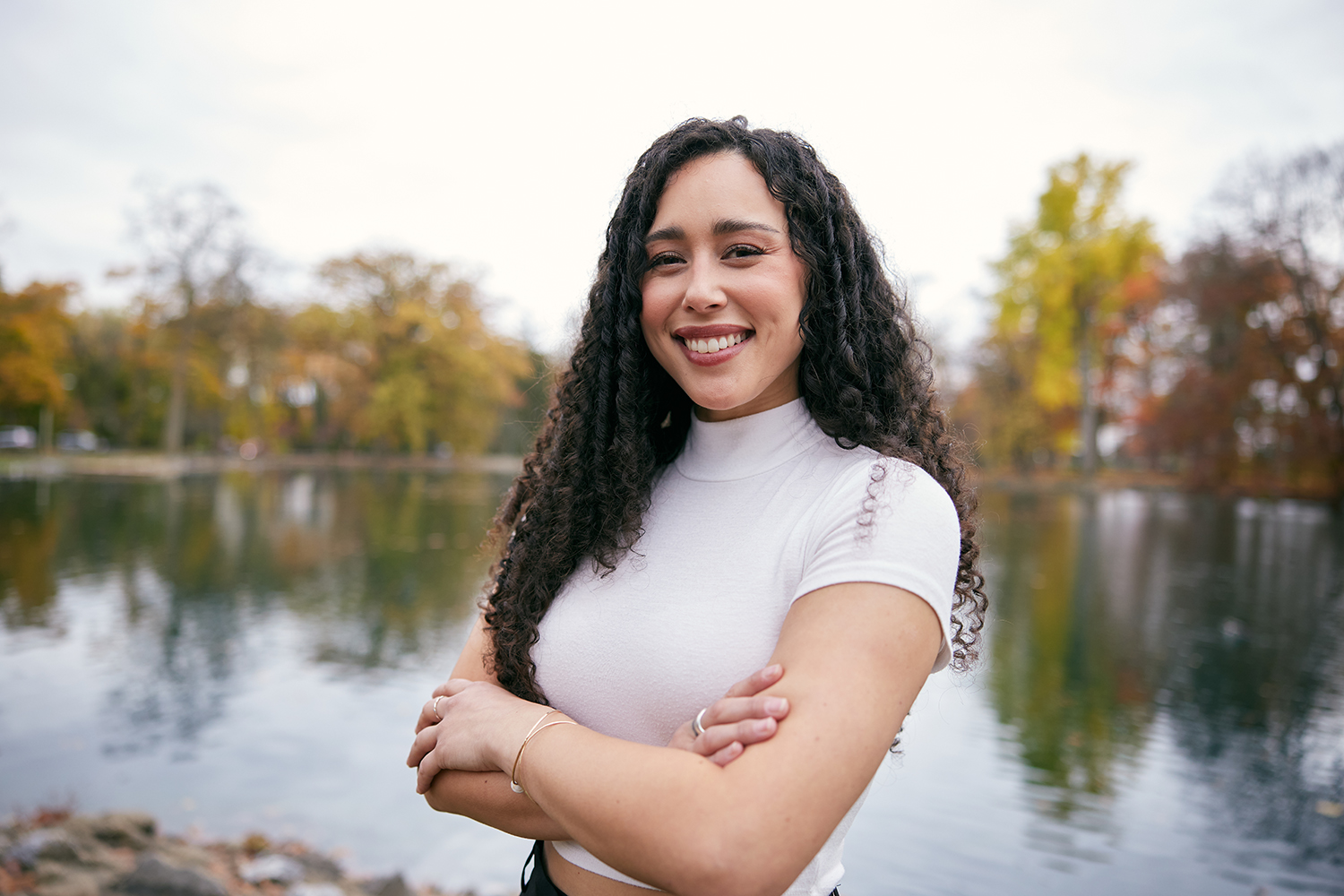
For most of her 31 years, Danielle M. lived with unexplained pain and numbness in her right shoulder and neck.
“I just thought it was maybe some nerve damage, and I didn’t get it looked into,” Danielle says. “Looking back, I should have.”
When Danielle’s symptoms got worse, she knew she had to find relief. She worked full-time as a makeup artist. It was more than a job — it was her passion. But the motions involved in the work (raising and extending her arm) made Danielle’s arm very tired and swollen.
Then one day, while she was exercising, her arm turned bright red. A friend convinced her to seek medical help. Doctors found a blocked blood vessel — called the subclavian vein — near Danielle’s collarbone, and she underwent a procedure to remove the clot that caused the blockage.
“They kind of said, ‘There’s nothing we can do, and you’re going to be on blood thinners the rest of your life,’” Danielle says. “I knew that was not the answer I wanted.”
Meanwhile, as her symptoms limited her ability to use her arm as a makeup artist, Danielle’s quality of life and her mental health began to suffer.
“I felt like I was broken and there was something wrong with me and I wasn’t possibly going to be able to get better,” she recalls. “It felt like my artistry was being taken from me.”
Finally finding answers and solutions
Danielle was hoping to get her life back on track, but she still didn’t know exactly what was wrong with her. Fortunately, a nurse at her local doctor’s office didn’t give up trying to find answers for her. “She went on a search for me, and she found Temple,” Danielle says.
At Temple Health, Danielle met with thoracic surgeon Cherie P. Erkmen, MD. After reviewing Danielle’s medical history and examining her, Dr. Erkmen delivered a diagnosis: Danielle had a rare condition called thoracic outlet syndrome (TOS).
“She absolutely knew that I had TOS,” Danielle says. “She said she’d never seen a clearer case of it.”
The thoracic outlet refers to the space between the collarbone and first rib (from the top). With TOS, nerves and blood vessels in this area are compressed within this small space, causing symptoms that may include pain, numbness, tingling, weakness, swelling, or redness in the affected shoulder and arm. The pain may become worse when a person raises their arm, which is why Danielle often felt pain when working as a makeup artist. Causes of TOS include injuries, illnesses, or congenital defects — conditions that develop in the womb before birth. Bodybuilding, having a high body mass index, and doing work or sports that involve repetitive overhead motions are among other factors that may contribute to the condition.
In Danielle’s case, she was born with an unusually large first rib, which crowded the nerves and blood vessels in her thoracic outlet, leading to her symptoms and her blood clot. To take the pressure off these structures, Dr. Erkmen recommended removing Danielle’s first rib on her right side and cutting a muscle in the area. This would create more space for the constricted structures. (Danielle’s left side has so far remained unaffected by TOS.)
Before going ahead with surgery, Danielle decided to try another treatment option: physical therapy, which can help improve TOS by strengthening muscles that support the clavicle bone. But the therapy didn’t improve Danielle’s condition enough, and she continued to have clots in her subclavian vein. That’s when she agreed to move forward with surgery, which made an immediate difference in her TOS symptoms.
“As soon as I woke up from surgery, the pressure that I’d had in my shoulder my whole life was gone,” Danielle says. “And I have quite a bit more mobility in my right arm now.”
She also no longer has to be on lifelong blood thinners. While blood thinning medicines can prevent potentially dangerous blood clots, they may cause serious bleeding as a side effect.
A new path forward
“I’ve never been healthier than I am now,” Danielle says.
While she still has some symptoms from her TOS, they are no longer severe. To help manage her condition, Danielle goes to physical therapy and performs yoga, both of which help her maintain good posture — poor posture can worsen TOS by putting pressure on blood vessels and nerves.
“When my posture is bad, that’s when I start to have more symptoms,” Danielle says.
Now, she’s not letting anything stop her from living life on her terms. Danielle attends college — studying music, business, entrepreneurship, and technology — while still working part-time in the beauty industry. She’s also a singer-songwriter, and hopes to produce her own music.
“I’ve found new ways to create and express myself and a new career path as well,” Danielle says.
Not so long ago, Danielle struggled with a condition that limited how she lived her life and, until she met Dr. Erkmen, didn’t know what was causing her problems. She’s grateful to Dr. Erkmen and the team at Temple, and she is glad that she trusted Dr. Erkmen to perform her surgery.
“I’m very thankful that I found her and she was able to guide me to where I am now,” Danielle says. “I’m so glad that I took her advice, because my life is definitely better after surgery.”
Helpful Resources
Looking for more information?
- What is Thoracic Outlet Syndrome?
- Treatment options for Thoracic Outlet Syndrome
- Thoracic Outlet Syndrome Center